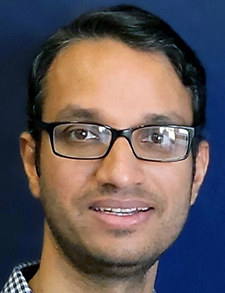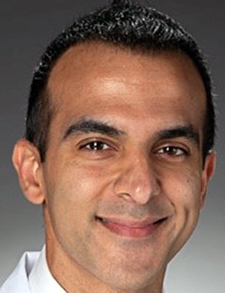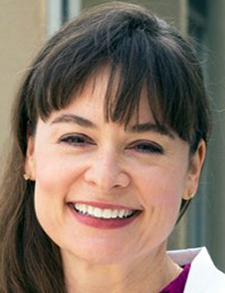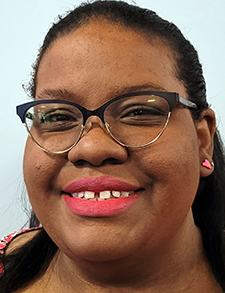Working with Patient and Family Advisory Councils


Dr. Sood
To achieve patient-centered care, a component of high-quality medical care, patients and their caregivers should be engaged in their health care decision-making processes, said Nikhil Sood, MD, a hospitalist at Banner Gateway Medical Center, a 286-bed urban adult community hospital in Gilbert, Ariz. One way for patients to get their voices heard is by serving on patient and family advisory councils (PFACs).
PFACs are comprised of former patients and their caregivers in addition to physicians, nurses, and ancillary staff. These formal groups focus on addressing challenges that patients and their families face, and also ensure that health care organizations remain committed to affordable and timely patient-centered care, Dr. Sood said.

Dr. Singh
“Patients and their families often have insights that hospitalists or other staff members don’t have, making them great resources for sharing the overall care experience,” said Amit Singh, MD, FAAP, a pediatric hospitalist attending in the department of pediatric hospital medicine at Cook Children’s Medical Center, a 464-bed urban children’s hospital in Fort Worth, Texas. “Whether it’s helping to craft educational materials for discharge or working on how to better involve patients and families in their own care during hospitalization, there should be almost no project or initiative that doesn’t include patient and family voices.”
PFACs can be resources for institutions to learn how the care they provide affects patients and families. In addition to collecting data, PFACs can be sources of quality-improvement and patient-safety initiatives, Dr. Singh said. They can partner with clinicians in research opportunities and can serve as voices for patients and families who are new to the hospital or health system or those who don’t feel empowered enough to speak for themselves.
Evidence is growing that meaningful patient and family engagement can help achieve the triple aim of better quality, better outcomes, and lower health care costs, and can also substantially reduce preventable harm.1
Studies show that when health care professionals partner with patients and families, it helps patients make more informed choices about their care, use medications more safely, practice more effective self-management, contribute to infection-control initiatives, and help reduce medical errors—all translating into measurable improvements in the quality and safety of care. Engaged patients better manage chronic conditions and have overall improved functioning.1
What PFACs do

Dr. Green
Amanda Green, MD, FACP, HMDC, CPPS, SFHM, chief medical officer at Paris Regional Health, a 150-bed community hospital in Paris, Texas, believes that the most important function of patients and their caregivers serving on PFACs is to give hospitals feedback on their health care delivery. Patients’ feedback about the clarity of discharge paperwork and medication reconciliation practices, for example, has been very valuable to hospitalists.
Dr. Sood’s PFAC is involved with multiple quality-improvement projects including patient safety, timely administration of pain medications, and fall prevention. Hospitalists serving on PFACs can play dual roles in these settings. They can address issues with nurse managers, therapy teams, and other ancillary service personnel involved in patient care during multidisciplinary rounds. Hospitalists can also provide recommendations to councils on how to address patient concerns and initiate change in organizational systems, processes, and workflows to enhance patients’ experiences and outcomes.
Interacting with PFACs
As the physician director of experience at Cook Children’s Medical Center, Dr. Singh partners with PFACs by making his colleagues aware of the council’s work as well as looking for opportunities for new quality-improvement projects that a parent or PFAC team member can be involved in. For example, his institution is currently trying to determine how it can improve family-centered rounding processes so bedside nurses and attending physicians can round together with patients and families. “PFAC team members are uniquely poised to provide the patient and family perspective because they know the hospital systems and processes well given their experiences,” he said.
Dr. Green leads her PFAC’s quarterly meetings, which include dinner. She uses PowerPoint slides to highlight discussion topics. The hospital’s chief executive officer, chief nursing officer, director of human resources, marketing director, and a board member attend; doctors are sometimes invited to listen to the feedback. Hospital leaders provide short presentations of interest from their area of expertise, either for educational purposes or to elicit input from community members. PFAC community members are invited to share their perspectives by also serving on other hospital committees such as those related to chest pain or strokes, or the patient safety and clinical quality committee.
Creating a PFAC team
When looking to create a PFAC, recruit hospital staff members to serve in the lead, logistics-coordinator, and recruitment-coordinator roles, Dr. Sood advised. “Hospitalists have become frontline in managing patients, and can have significant roles in PFACs,” he said. Assign responsibilities according to each staff member’s experience and training.

Ms. Dorsey
“Include staff members from multiple levels within a hospital system who are passionate about making positive changes,” said Natalie Dorsey, MBA, BS, a parents as partners coordinator in the family engagement department at Cook Children’s Medical Center.
“Identify patient and family advisors who are willing to speak up and provide constructive criticism,” Dr. Sood said.
Added Ms. Dorsey, “Cast a wide net and include patients who have experienced a wide variety of diagnoses.”
Sometimes Dr. Green has to ask certain members directly for their thoughts on a topic because they tend to be soft-spoken. “These introspective individuals usually have great insights,” she said.
According to the Institute for Patient and Family-Centered Care, at least 50% of a PFAC’s members should be patient and family advisors (PFAs) that reflect a community’s diversity. A PFA should serve as a chair or co-chair.2
Try different outreach methods simultaneously to find the best possible candidates, Dr. Sood said. Post notices in the cafeteria and family lounges, send announcements through email and regular mail to patients and their guardians, and use social media. Ask current hospital volunteers to help with recruitment efforts.
Dr. Green asked the hospital’s marketing director and risk director to recruit patients and caregivers who reported both positive and negative experiences. She called potential candidates to explain what a PFAC was and asked if they would be interested in serving. They strove to have a diverse group in regard to gender, age, race, and religion.
When Dr. Green encounters patients who are very involved in their health care and offer improvement suggestions, she will invite them to participate. “Be upfront about what the commitment involves, such as attending a one-hour meeting quarterly,” she said.
Next steps
In addition to recruiting members for your new council, you will need to define and establish a PFAC’s mission, vision, and short and long-term goals. Have a clear vision for three-, six-, and 12-month goals, Dr. Sood said. Patient and family caregivers should participate in shaping a PFAC’s structure and agendas.
Determine logistics, including meeting dates, times, and locations. Consider giving gift cards or providing free child and elder care or meals to encourage community members to participate, Dr. Sood said.
At the first PFAC meeting, give a welcome packet to each member. Everyone should briefly introduce themselves, Dr. Sood continued. Explain how patient and family advisors’ feedback and ideas will be collected, used, and implemented. At the end of the meeting, discuss potential topics and agenda items for the next three to five meetings.
To sustain a PFAC, allocate adequate time and resources to meaningful topics, and cultivate personal relationships with advisors, Dr. Sood continued. Share how patient and family advisors’ feedback has been helpful and how and when changes are made. Always treat patients and families as equal and valued team members.
As the PFAC chair, Dr. Green keeps minutes and presentation slides in a binder to review and provide accountability. She recommends letting PFAC members know how their feedback was implemented. For example, some members gave suggestions on how to improve comment cards. “We showed the group our changes based on their feedback,” she said.
Each PFAC at Cook Children’s Medical Center created a set of governing guidelines. “They help to set expectations for all parties involved,” Dr. Singh said.
Families serving on PFACs are trained volunteers. During the training, attendees learn how to effectively share stories that are focused and concise, Ms. Dorsey said. For example, they learn how to choose language that will not alienate any department. Training also covers the principles of family-centered care, the Health Insurance Portability and Accountability Act, confidentiality, the value of having a PFAC for staff and parents, and the hospital’s general volunteer rules.
Ms. Dorsey would advise hospitalists to attend meetings with an open mind, to be willing to hear the feedback families provide, and to take action based on their suggestions.
As a PFAC member, a hospitalist can communicate patient concerns to the council and provide recommendations to bring about changes in organizational systems, processes, and workflows to enhance the overall patient experience and outcomes, Dr. Sood said.
“By serving on PFACs, patients and their families help us understand their perspective of the health care environment, which then allows us to improve how we care for them,” Dr. Green concluded.
Karen Appold is an award-winning journalist based in Lehigh Valley, Pa. She has more than 25 years of editorial experience, including as a newspaper reporter and a newspaper and magazine editor.
References
- Carman KL, Dardess P, et al. A roadmap for patient and family engagement in healthcare practice and research. American Institutes for Research website https://www.air.org/sites/default/files/Roadmap-Patient-Family-Engagement.pdf. . September 2014. Accessed February 26, 2024.
- Effective patient and family advisory councils. Institute for Patient-and Family-Centered Care website. https://www.ipfcc.org/bestpractices/sustainable-partnerships/engaging/effective-pfacs.html. Accessed February 26, 2024.